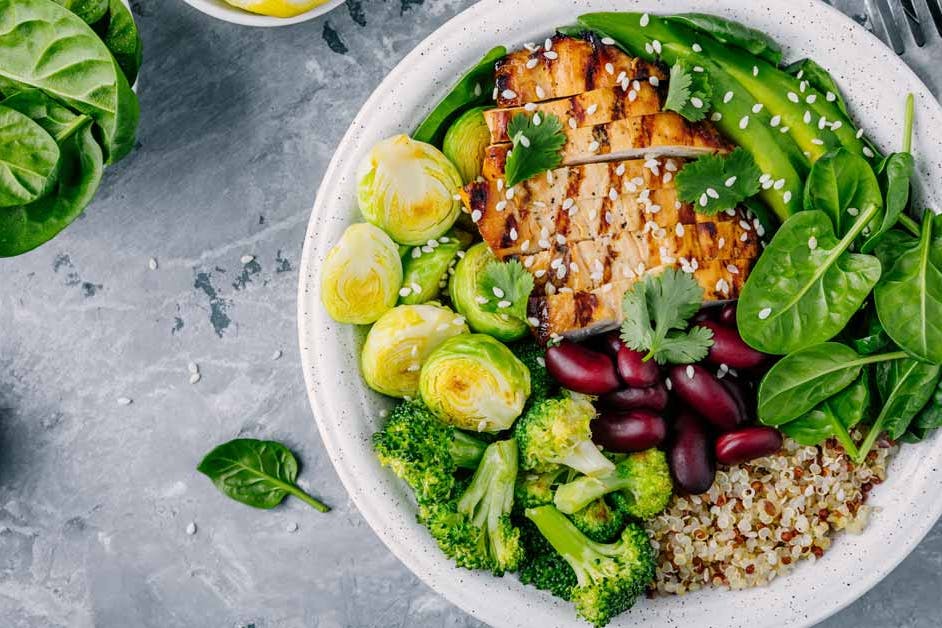Reduce Your Risk of Type 2 Diabetes
Diabetes is associated with numerous medical complications, not the least of which is cardiovascular disease. Early prevention can save lives.

Type 2 diabetes has become one of the biggest health concerns in America. The complications caused when an individual becomes insulin-resistant can range from loss of mobility to death.
Is type 2 diabetes reversible? Sometimes. But whether or not you can reverse type 2 diabetes, reducing high blood glucose levels and managing your weight can help you enjoy a healthy life.
The Risk of Cardiovascular Disease Among Diabetics
While diabetes can cause numerous unwanted health concerns, cardiovascular disease is the leading cause of morbidity among those who have diabetes. This can present in multiple different forms of cardiovascular disease, including:
- Ischemic heart disease
- Heart failure (HF)
- Stroke
- Peripheral artery disease
Observational studies demonstrate a powerful dose-response relationship between the degree of hyperglycemia in diabetes and the risk for adverse cardiovascular outcomes.
However, the article also clearly reveals that more favorable results are achieved by, “collectively addressing the multiple risk factors commonly associated with type 2 diabetes.”
In short, the best form of treatment isn’t one-size-fits-all. It’s personalized and tailored to each individual patent. Dr. Ozkan and Dr. Ndumele reported that such an approach resulted in the following positive outcomes:
Over 8 years, intensive intervention with behavior change and pharmacological therapy as needed to achieve control of glycemia, blood pressure (BP), and cholesterol, compared with conventional therapy, resulted in a 59% reduction in cardiovascular events, a 57% reduction in cardiovascular death, and a 46% reduction in all-cause death.
10 Ways to Prevent Type 2 Diabetes
The following are 10 of the most common ways to prevent type 2 diabetes, reverse type 2 diabetes, and reduce the side effects of irreversible type 2 diabetes. These natural approaches can be incorporated into everyday lifestyle changes, supporting patients who want to enjoy a healthy and balanced lifestyle.
1. Manage Your Weight
While not everyone who develops type 2 diabetes is overweight, it’s significantly more common among those who carry excess body fat. This is because excess body fat, especially fat stored around the abdomen, increases the body’s resistance to insulin.
Fat stored around the midsection is known as visceral fat. A 2012 study shows that one of the primary issues with visceral fat is that it promotes inflammation, which can cause insulin resistance.
Losing even a small amount of weight can help reduce the chance of type 2 diabetes. However, the more weight you lose, the more benefits you will experience.
2. Workout Regularly

One of the biggest issues many individuals face is that working out feels like — work! Making working out fun by working out with friends. That way you can burn calories while spending quality time with folks you enjoy. It's also a great way to stay accountable. Because it's a lot easier to break a date with yourself than with a friend.
Exercise is a fantastic way to manage your weight. It helps you burn excess calories and potentially, lose weight. It also can boost your mood, curb cravings, and improve your sleep.
In addition to weight management, exercise helps increase the body’s insulin sensitivity. In short, when you exercise, your body requires less insulin to regulate your blood sugar levels.
In a 2014 study, researchers found that moderate to intense exercise increased insulin sensitivity by 51%, with high-intensity exercise increasing by 85%. It is worth noting that these positive benefits were only experienced on days an individual worked out.
A wide variety of activities have been shown to help with weight management and reducing insulin resistance. These include:
3. Eliminate Sugar & Refined Carbs
Donuts. Chips. Cookies. Consuming large quantities of refined carbs and sugary foods such as these commonly lead to individuals developing type 2 diabetes. Why?
Because these foods can lead to obesity. And because the body quickly breaks these foods down, so they are absorbed by the bloodstream almost immediately. This causes big spikes in your sugar levels, forcing the pancreas to attempt to produce more insulin.
Popular Health Tips
4. Eat a Balanced & Healthy Diet

One of the easiest and simplest ways to ensure you're eating a balanced and healthy diet is to eat at home.
Simply eliminating sugar and refined carbs can be a great step. But you also want to make sure you’re giving your body all the nutrients it needs. This means eating a balanced and healthy diet complete with:
- Vegetables
- Fruit
- Protein
You’ll want to avoid foods high in saturated and trans-fat. Rather, look for foods that are high in fiber, as these will stick with you longer. Add foods rich in Omega 3s, like avocado, nuts, and fish. And, keep your plate diverse with color.
5. Limit Processed & Fried Foods
Sugar and refined carbs are often found in processed and fried foods. These are also a major source of saturated and trans-fat. While ‘convenience meals’ (aka fast food) may save on time, they may rob you of time later in life.
Cooking for yourself is typically the best option. Taking snacks like nuts and dried fruit with you can be a good way to tide you over until you get home. Alternatively, if you find yourself out and about, look for salad bars with whole grains, leafy greens, and whole proteins.
6. Stick to a Low-Carb Diet

Low-carb diets have been shown to lower blood sugar and insulin levels. This helps to increase insulin sensitivity and reduce the chance of type 2 diabetes. In some instances, it can even reverse type 2 diabetes.
In a 2015 study, researchers found that a low-carb diet leads to a significant decrease in weight and insulin sensitivity in just nine months. Even just a modest reduction in carbohydrates can promote weight loss and improve insulin sensitivity, shows additional studies.
7. Quit Smoking
It’s not new news that smoking is bad for your health. But did you know in addition to causing cancer, smokers are twice as likely to develop type 2 diabetes as non-smokers?
In the study, ‘Smoking as a modifiable risk factor for type 2 diabetes in middle-aged men,’ researchers looked at the risk of diabetes in middle-aged male smokers after they quit smoking. It found that males who quit smoking reduced their risk by 13% within the first five years. And after 20 years they had the same risk as individuals who had never smoked.
8. Limit Alcohol
In addition to being empty calories, alcohol can increase your appetite. Both of these factors can lead to excess weight. Furthermore, alcohol can cause inflammation, which increases insulin resistance.
To reduce your risk of type 2 diabetes, it’s strongly recommended that you limit your alcohol intake.
9. Drink Lots of Water

Water is the elixir of life. There is no beverage more vital for your survival. Plus, if you drink primarily water, you’ll reduce your alcohol intake and high-sugar beverages.
In a 2016 study, researchers looked at the correlation between sugary drinks and latent autoimmune diabetes of adults (LADA). The study found that those who consumed more than two servings of a sweetened beverage per day increased their risk of developing LADA by 99%. Furthermore, the study showed that those who consumed sugary drinks increased their risk of developing type 2 diabetes by 20%.
10. Manage Portion Sizes
Whether you follow a low-carb diet or not, it’s essential to avoid large portion sizes. This is especially true if you’re struggling to maintain a healthy weight.
In a 2015 study, researchers found that overeating caused high blood sugar levels, high insulin levels, and a reduction in metabolism. This led to a higher risk of developing type 2 diabetes.
One easy way to eat smaller portion sizes is to use smaller plates. Visually, a full plate is more pleasing to the eye. Additionally, you just can’t get as much food on a plate that’s smaller.
Get Help Managing Your Weight
Losing weight is hard, especially if you are trying to do it on your own. Medically supervised weight loss provides support and guidance to help you lose weight quickly and keep it off.







